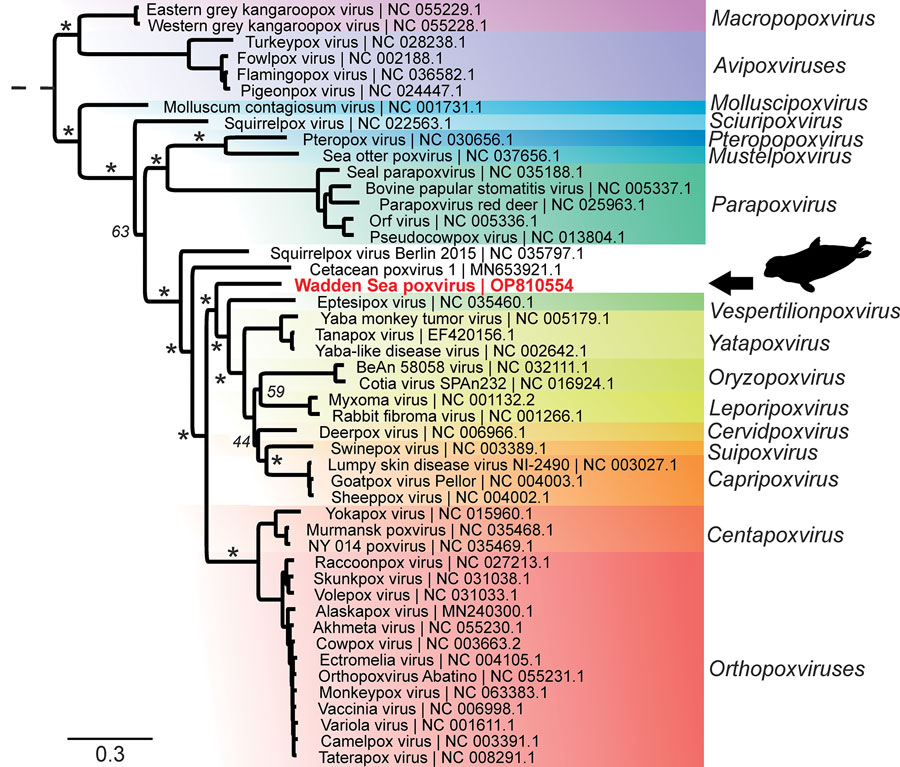Volume 29, Number 6—June 2023
Dispatch
Detection of Novel Poxvirus from Gray Seal (Halichoerus grypus), Germany
Figure 2

Figure 2. Phylogenetic tree of novel poxvirus detected from gray seal (Halichoerus grypus), Germany. Sequencing resulted in a complete poxvirus genome and the virus was tentatively named Wadden Sea poxvirus (red text). Phylogenetic analysis of 15 concatenated viral proteins (alignment of 9,130 aa) showed that Wadden Sea poxvirus (black arrow) is a member of the subfamily Chordopoxvirinae but might resemble a novel species distant from the established genera. Asterisks indicate major branches of the bootstrap support at >90%. Scale bar indicates amino acid substitutions per site.
Page created: March 29, 2023
Page updated: May 17, 2023
Page reviewed: May 17, 2023
The conclusions, findings, and opinions expressed by authors contributing to this journal do not necessarily reflect the official position of the U.S. Department of Health and Human Services, the Public Health Service, the Centers for Disease Control and Prevention, or the authors' affiliated institutions. Use of trade names is for identification only and does not imply endorsement by any of the groups named above.